How to make a hallway with your own hands?
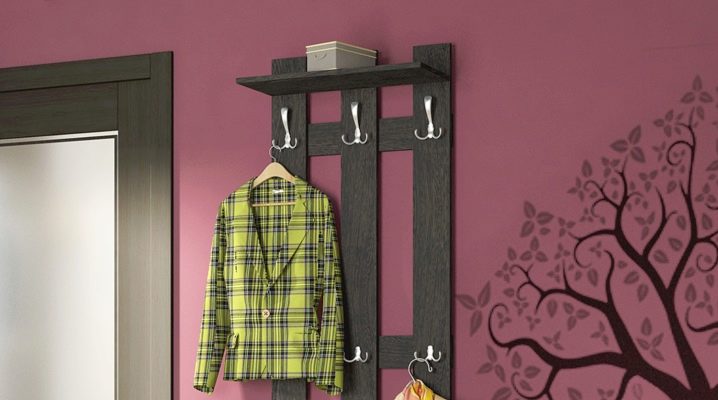
Trying to save money or realize their idea without turning to designers and designers, many people think how to make a hallway with their own hands. This is quite an affordable business, but it is important to take into account some principles and know all the subtleties.
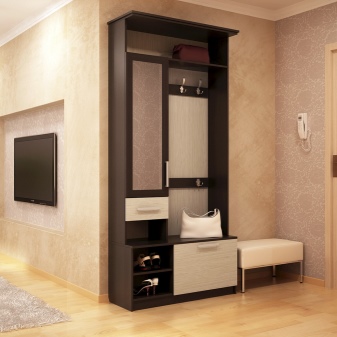

Views
By the appearance of the "entrance" room, all your guests and even just casual visitors will give the impression of the dwelling as a whole. Think carefully about the concept, the main idea of the whole room. And then just get to work when you are convinced that the idea is practical, and its implementation will lead to the optimal result.
A do-it-yourself hallway is in any case more unique than a custom-made one. But freed from the "tutelage" of designers and engineers of the furniture industry, you will have to independently understand all the nuances. The main types of these rooms are corner, open, compartment and swing, depending on the specific type, the requirements for furniture also differ.
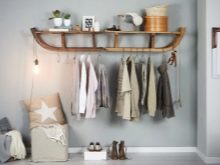

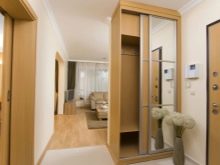
In a corner room, absolutely everything is subordinated to the idea of maximum use of space, or rather, an empty corner. On the sides of the wardrobe, open shelves can stand, in other places there are classic-looking cabinets and hangers. Additionally, you can save the area of the corridor if the cabinet doors are mirrored.
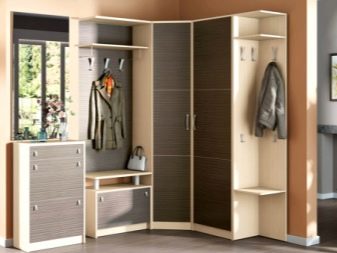
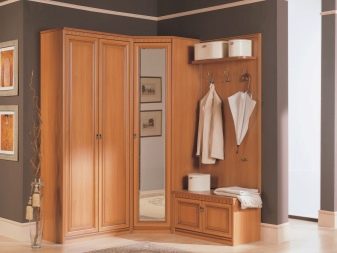
An open type of hallway contains the very minimum of furniture - obviously it will not be upholstered, sometimes you will not find a closet. If it is, then it is relatively small, hooks and hangers, visible to everyone, are used to hang clothes. The opposite is a room in a compartment format, in which wardrobes of the same type are invariably placed. It easily accommodates the personal belongings of everyone who lives in the apartment, sometimes you don't even have to look for a place for clothes for different seasons.
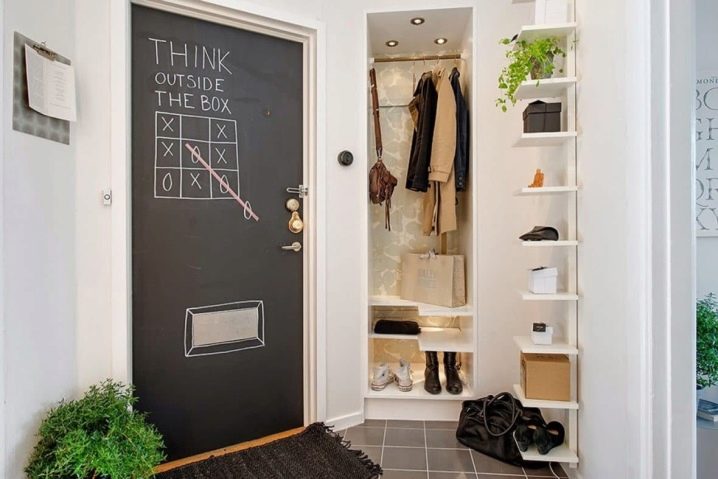
Material
Among all materials, it is advisable to give preference to furniture boards - they are superior to simple boards made of pine and other types of wood, do not contain synthetic resin or other artificial component. They have only one minus - this is a solid price.
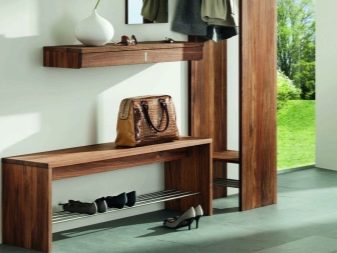
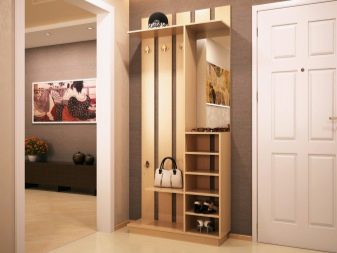
The use of chipboard, plywood, drywall is attractive in those cases when considerations of economy are in the first place for you. Do not be afraid, however, to allow a mistake against the canons of style, the design possibilities of modern materials are quite large.
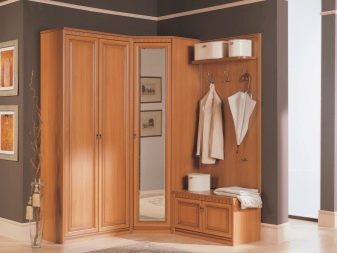
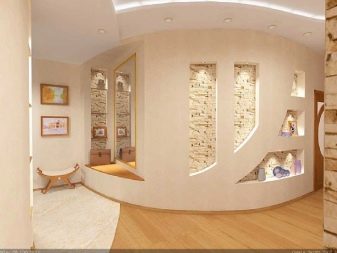
If you can use MDF instead of chipboard or take ready-made parts from old furniture, this is exactly what you should do. This will allow you to perform the work better, get an aesthetically complete result, and the furniture will be better in terms of environmental parameters. The use of materials at hand is much more convenient and easier than trying to use steel or aluminum pipes, because metal processing at home is quite difficult.
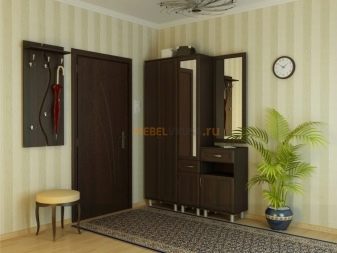
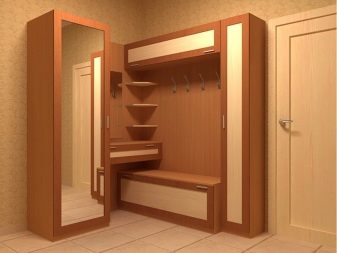
The veneer is not too heavy, but the material is expensive; choosing between melamine and laminate, one should definitely give preference to the second one, as it is stronger and more durable.
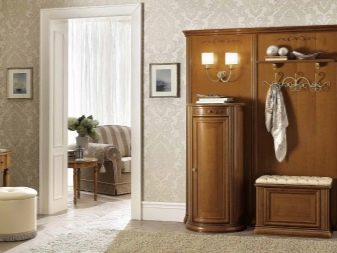
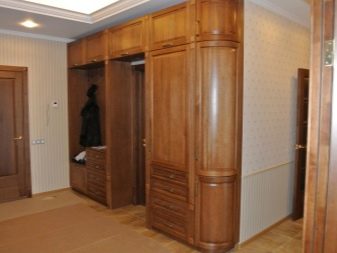
Dimensions (edit)
When the material is selected, you need to decide on the dimensions of the future structure (or several furniture designs).
Even if the size of the corridor is "mini", try to place in it:
- Place for storing clothes;
- Shoe cabinet;
- Seat for comfortable changing shoes;
- Several shelves for various little things;
- Storage system for hats, umbrellas and bags.

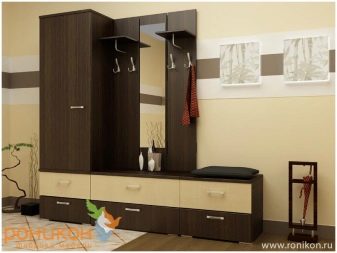
All of these functions can be performed by matching pieces of furniture to help save space. In case of an acute shortage of space, you should limit yourself to a compact floor or wall corner hanger connected to a shoe rack and a small soft seat.If a cabinet is being installed, its minimum depth should be 40 centimeters (it just doesn't make sense to do less). For a corner cabinet, the optimal parameters will be the length and width of 0.9 meters, the height of 2.5 meters, but provided that the ceiling height allows.
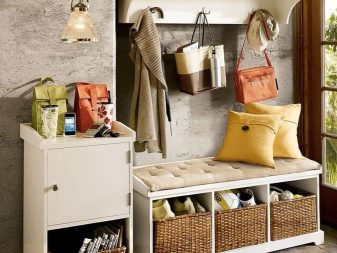
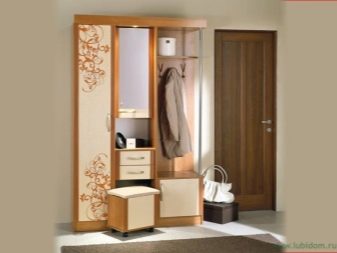
Colors
Coloring furniture in the corridor is a very important moment in its design; according to the designers, it should be selected in harmony with:
- Wall color;
- Color characteristics of other rooms;
- The total area of the hallway itself.
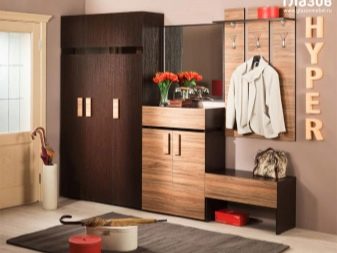

Light colors always add not only spaciousness, but also a feeling of freshness, the room will look more modern. For narrow corridors, elongated in length, brown and other heavy paints are categorically unacceptable. They will give the impression of being in a strange gloomy tunnel. If the area is large enough, then the white walls will evoke associations with a clinic or laboratory.
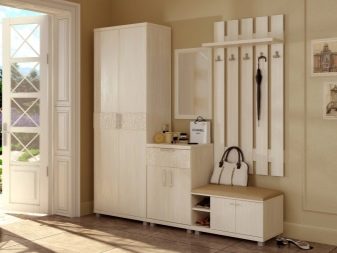
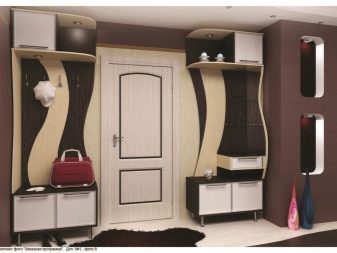
Conclusion: you should not paint furniture in the same colors as the walls.
Fittings
Door hinges and ties, handles, mechanics for opening doors are used. There are also bars for hanging hangers, shelf and drawer holders, shoe cassettes and metal mesh boxes.
Swing doors are most often hung on four-hinged hinges, and if a more compact door unit is required, furniture blinds of German and Italian production are used. It is not recommended to take corner screeds, their appearance will not fit into any decent interior.
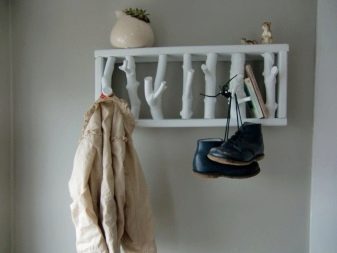

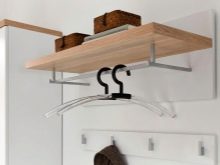
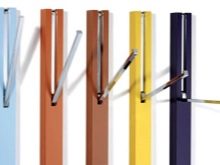
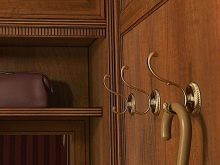
Required tools
You will definitely need:
- Saw or electric jigsaw;
- Construction knife;
- Measuring tape;
- Emery;
- Screwdriver.
From consumables you will need furniture screws, corners and door hinges.
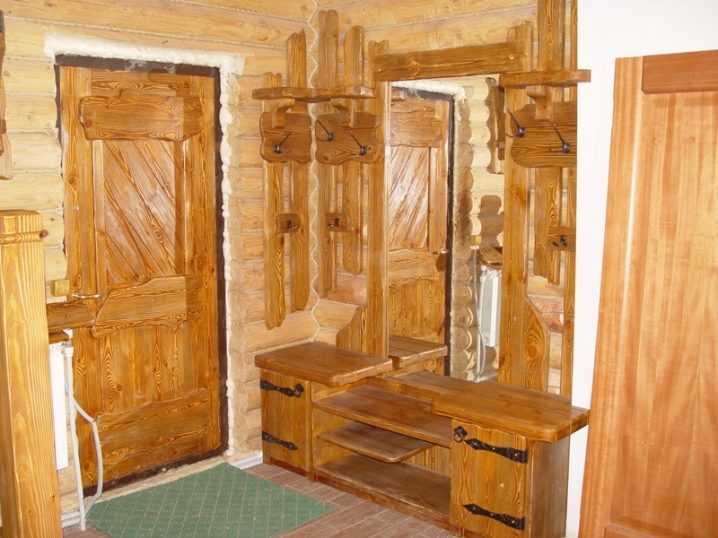
We make drawings and diagrams
It makes sense for both beginners and experienced home craftsmen to draw up drawings and diagrams, because even the most prepared can make a mistake, do something wrong or miss an important circumstance. Immediately decide on the dimensions and geometric configuration, with what types of furniture will be used. In a spacious room, you can put a wardrobe, and if there is not enough space, you will have to draw a corner hallway.

Features of filling
At a level below 70 centimeters, it is advisable to fix not rolling out boxes, but baskets in the form of a net (they are more convenient and do not collect dirt so much when storing shoes). Using modern brackets, it is possible to place such a basket in a cabinet much wider than themselves. Considering, again, the relatively small dimensions of the hallways, all furniture components in them should be smaller than those used in other rooms.
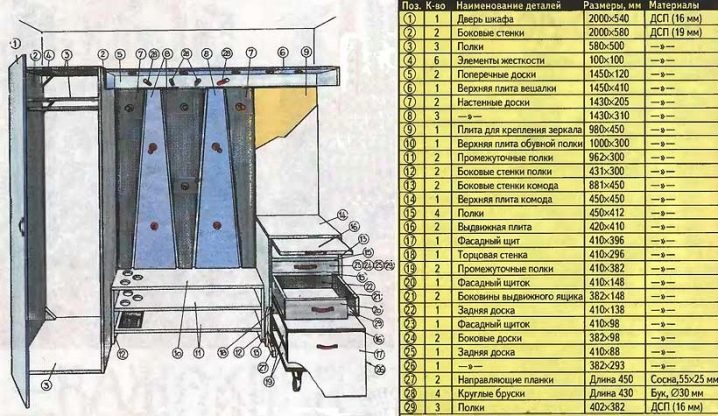
Style
Format country It is not in vain that attracts the attention of designers, because it brings a sense of coziness and comfort to the room.
Scandinavian style Is a combination of warm natural shades as accents and a general light background. Art Nouveau style, aka Art Nouveau, is distinguished by curved lines, similar to plant stems. A modern hallway has no definite framework, it can take the best from all other styles, and at the same time, the design cannot be reduced to one of them.
Provencal style favorably played up and emotionally enhanced just due to the antique decor. But in the "Scandinavian" hallway, unnecessary decorative elements are inappropriate, there should not be anything that would not be absolutely necessary. On the other hand, it is very useful to introduce luxurious gilded details into an interior in the spirit of Art Nouveau. If exquisite mirrors are put, bright color accents are made, this will only be a plus.
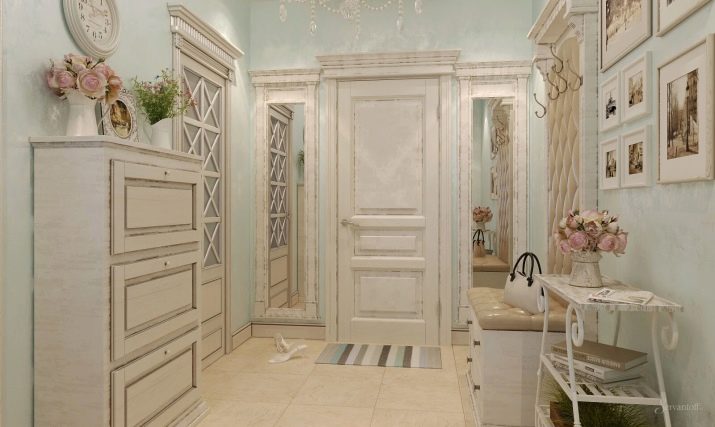
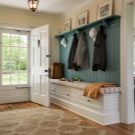
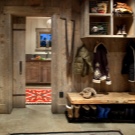
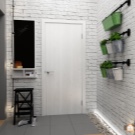
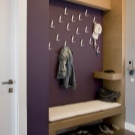
Design
It is advisable to use minimalist furniture in the hallway of the Khrushchev apartment. Discard unnecessarily small details, try to ensure that all elements of the headset are made in a uniform manner. Closed storage systems are preferable to open ones, they do not create a feeling of overcrowding and bad taste. Only in the smallest rooms it makes sense to put an open hanger instead of a cabinet or drawer.Visual softening of corners and maximum smoothness of lines are also important requirements for the design of corridor furniture.
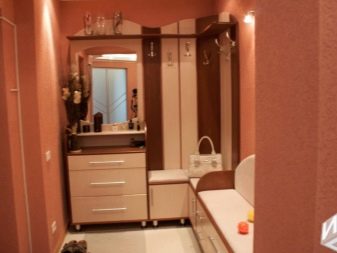
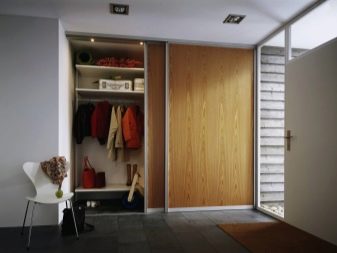
For all the beauty of natural stone, embossed panels and similar volumetric solutions, discard them - the absorption of space is too bad for the feeling of it. Important: do not use large patterns, they only spoil the impression. When decorating both furniture and walls, use only high-quality materials and structures that will not lose their attractive appearance for a long time.
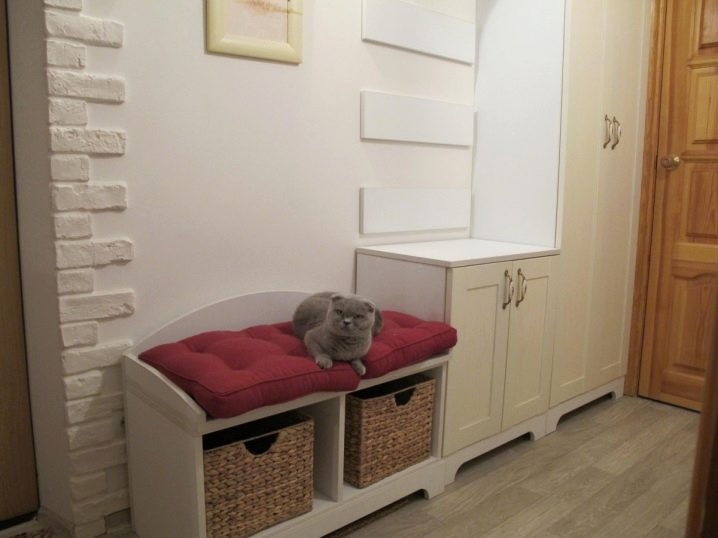
How to do it?
If it is decided to make the furnishings wooden, you will need furniture boards, boards with dimensions of 200x12x1.6 centimeters, a grooved board 200x24x1.8 centimeters, three-meter slats, plywood, hinges and handles. Other components may be required depending on the specific idea. It is recommended to start work with the assembly of the curbstone (dimensions, for example, 82x40x4 cm); the tops of the side walls in the corners are sawn off to narrow the lid compared to the main body. Self-tapping screws are used to connect the parts, at the bottom they must cut out the corners for the baseboards. The front plate should be secured with dowels.
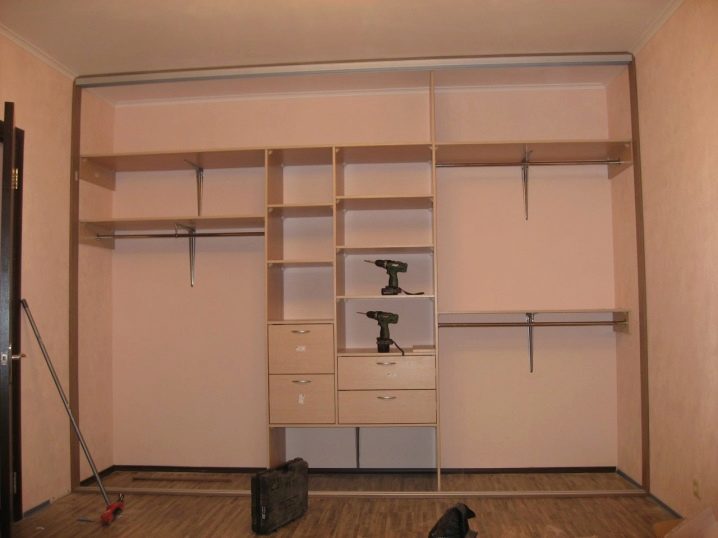
Then you need to make a simple door (dimensions 40 by 40), drill holes for the hinges and install the part. Runners are made for a roll-out box in the upper lobe of the bedside table, they are cut out of plywood and fixed on the sides.
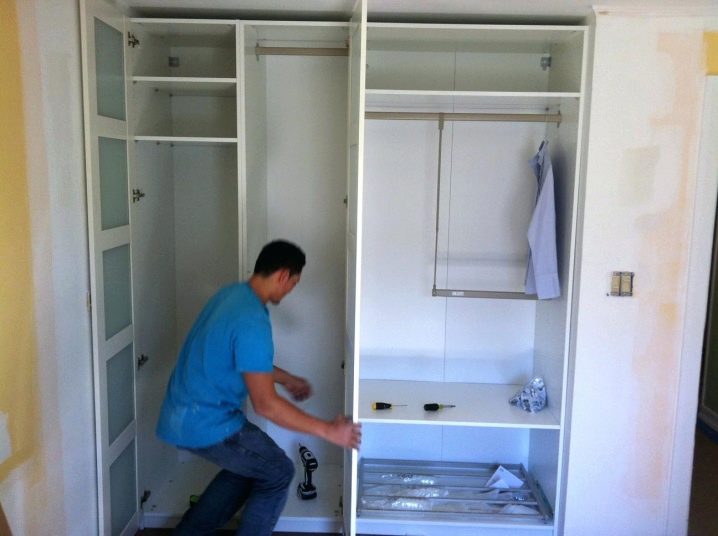
Next comes the turn of the curbstone cover (mounted on dowels), it is required to hammer short furniture nails into the upper ends of the sidewalls by about two-thirds. Attach the cover and press on it, this will mark the holes. They are drilled, a cover is installed on the dowels and glue. For better adhesion of the adhesive layer, a heavy load should be placed on top.
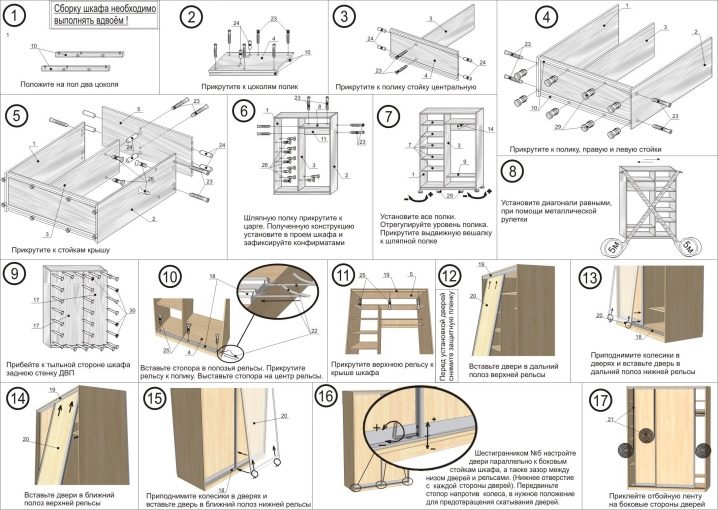
The next step is the manufacture of a curbstone, which should differ from the previous one, its dimensions are 82x49x40 centimeters. To make internal shelves or not, and how exactly, is up to you. From the sides, the structure is fastened with self-tapping screws, and the upper segment of the middle partition will hold the dowels. The doors will need to be cut out, hinges fastened, the front strip and cuts for the skirting boards must be prepared.
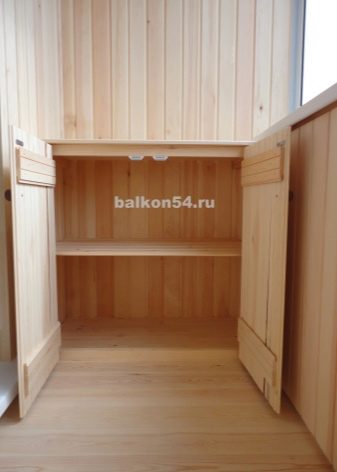
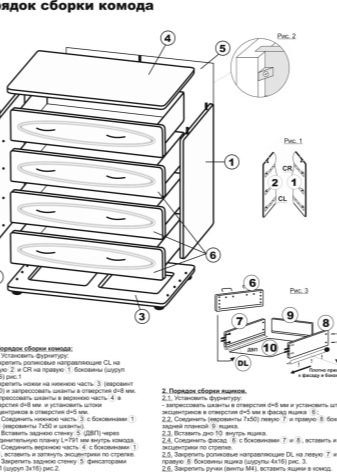
It is not difficult to make a pencil case yourself with dimensions of 200x40x40 cm at home. Side, upper and lower elements are sequentially formed, each of them, with the exception of the front strips, will be held by self-tapping screws. Plywood corners are placed in the corners, giving the structure an additional margin of safety. The shelves installed in the pencil case lie on holders made of rivets with a partially cut off top. Three hinges must hold each door.
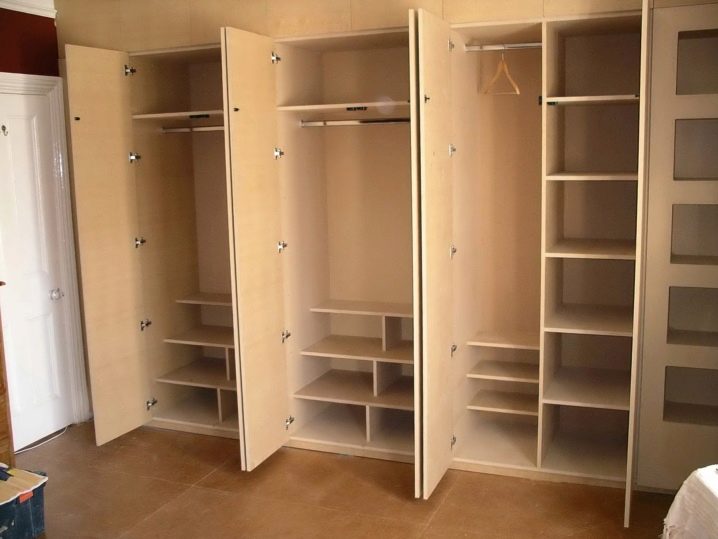
A lattice wall is formed from the boards, it is advisable to set the transverse rail in such a way that hooks are later attached to it. Cut out the space for the bedside table, and the shelf should take the top of the sheathing. To make holders for it, just take the scraps of boards left over from previous work. All surfaces, even the inner ones, as well as the ends, must be thoroughly sanded.
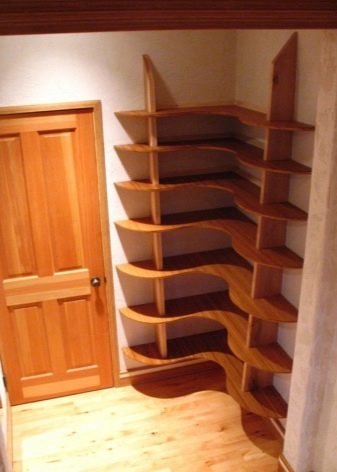
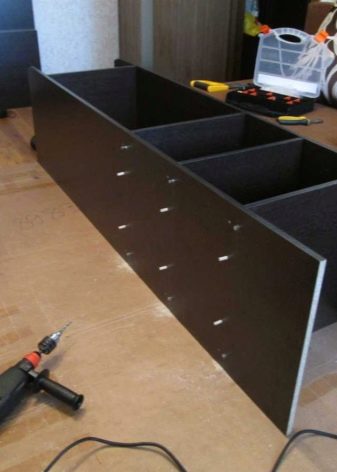
As you can see, there will be nothing difficult in this work for everyone who owns carpentry tools at a minimum level.
Advantages and disadvantages
The clear advantage of making your own hallway will be saving money. When there are children in the family, it is very useful to include them, so that they do not grow up with little hands. There is only one drawback - the risk of error.
Successful examples and options
Making furniture out of wood and placing it in the hallway is not too difficult. In a large corridor, you can place it around the perimeter, and if there is little space, you will have to use an angular arrangement. Options with mirrors and lighting for the dacha are hardly appropriate; such solutions are more correct to use in a full-fledged city dwelling.

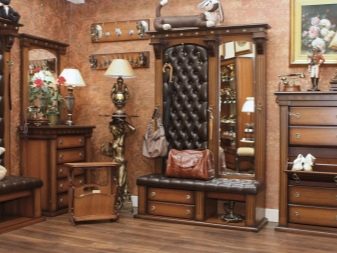
Our video review will help you make a hallway with your own hands.













I have already made almost the entire hallway with my own hands, it remains to buy a plinth.
The comment was sent successfully.